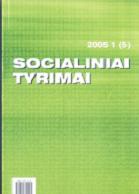Pridėtinės vertės mokesčio tarifai Lietuvoje ir Europos Sąjungos valstybėse
Value Added Tax Tariffs in Lithuania and Europe Union Countries
Author(s): Danutė Bendikienė, Virginija JanišauskienėSubject(s): Social Sciences
Published by: VšĮ Šiaulių universiteto leidykla
Keywords: Value-added tax tariffs; taxes.
Summary/Abstract: The law of Value Added Tax (VAT) became valid since May 1, 1994. Since 1995 it has become the main source of the budget revenue (34,33% of the total). The standard rate in Lithuania is 18%, two reduced tariffs – 9% and 5%, and 0% for export. Majority of tax special-ists think that VAT is efficient and easy to collect as taxes are subjected to consumers. The following conclusion can be done after analysing the change of VAT rates in 1994–2003 and statistical data: revenue of the budget increased from 1148.1 million LTL in 1994 to 3823 million LTL in 2003, it means that the revenue increased 3.3 times. This increasement was a result of levy base expansion, VAT increase-ment, especially in 1997, when VAT for food was raised twice from 9% to 18%. The same tariff (18%) was set for some service, fuel, coal, crude oil and gas. The amount of collected VAT is also resulted by macroeconomics of the country. In Europe Union countries are recommended stan-dard taxes 18%. In various countries it fluctuate from 15% to 25%. Europe Union countries also are using and preferential taxes (often two). In different countries they are different. In Lithuania using standard 18% taxes and two preferential: 9% and 5%.
Journal: Socialiniai tyrimai
- Issue Year: 2005
- Issue No: 5
- Page Range: 26-37
- Page Count: 12
- Language: Lithuanian

